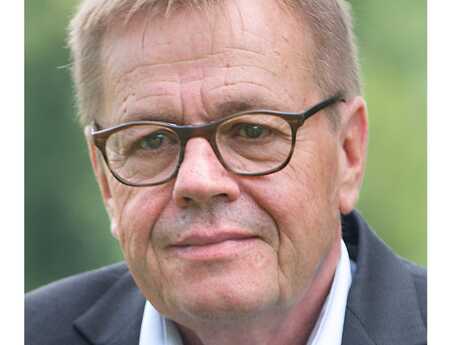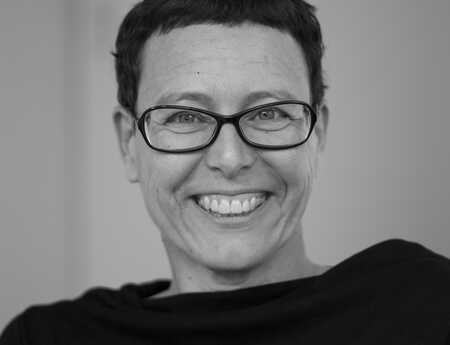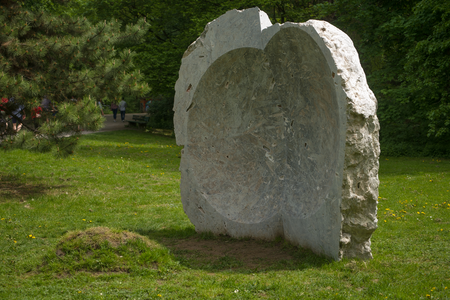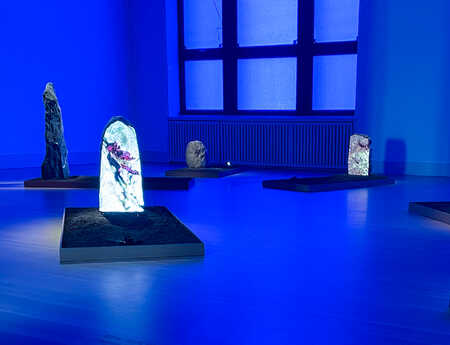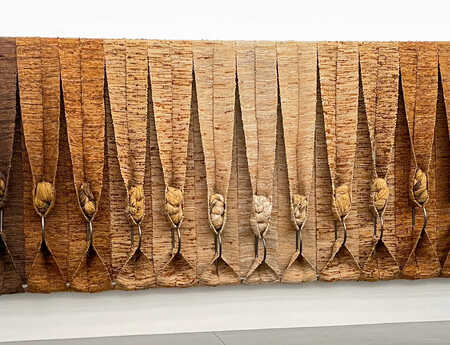A Sound Box made of two Limestones
Until June 18, two concave-shaped Lithuanian limestone foundlings weighing several tonnes will be standing in Munich's Isar meadows, near the Deutsches Museum. Every Tuesday at 5 p.m., they are transformed into a sound sculpture. Copper Lick is what Lina Lapelyté calls her ‛sound stones’. They capture the sounds of the environment like large satellite dishes.
Lina Lapelyté, born in Lithuania, works as a composer, musician, film director, and visual artist. In 2019, she won the Golden Lion at the Venice Biennale with her performative opera Sun & Sea. Together with the architect Mantas Peteraitis, who is also Lithuanian, she has composed a score for church bells and created a ‛sounding sculpture’ to accompany it. Lapelyté had two blocks of limestone hollowed out on their front, similar to a parabolic mirror. The slabs were then carefully placed next to each other, reminiscent of a shell. Their finely polished surfaces reveal inclusions such as fossils or streaks. Fish, amphibians, and insects that lived in the warm and dry climate of the sedimentary rock formed in the Palaeozoic age give us a glimpse of the state of the world at that time.
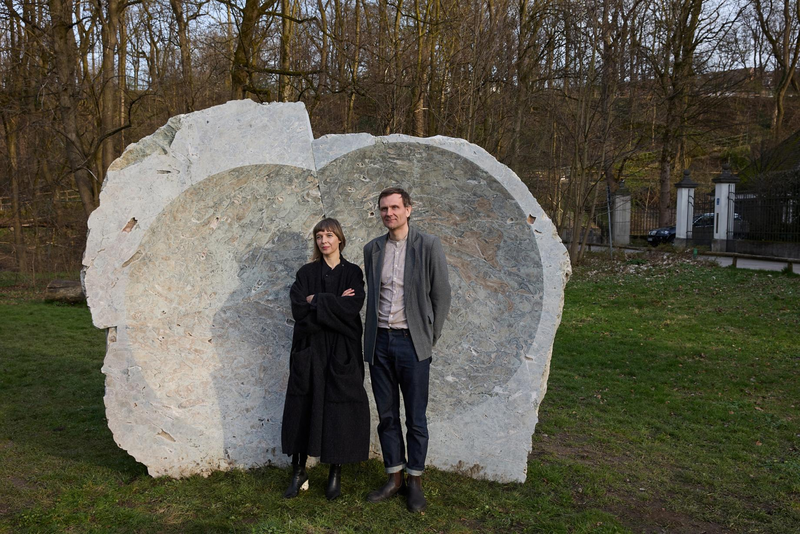
The Sounds of the City
Every Tuesday, shortly before 5 p.m., the bells of the six neighbouring churches begin to chime. The sculptures capture, reflect, and amplify the sound. A choir of singers performs in front of them, singing along with the bells: the murmuring of the nearby Isar, the roaring of the passing cars, and the rustling of the trees in the neighbourhood all blend together.
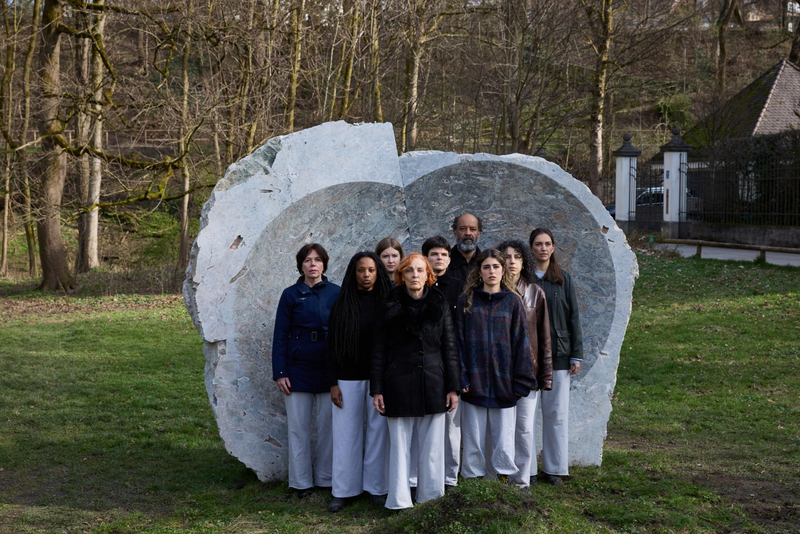
The hollow shape of the stones, reminiscent of a human ear, brings the acoustic diversity of the city to life. Lina Lapelyté counters the chime of the bells with the weight of the human voice. For her, the city is full of sounds. One hears the rushing of the river, the rumble of traffic, chirping birds, children's voices, and, depending on which way the wind is blowing, the ringing of church bells. For Lapelyté, bell sounds are omnipresent in public spaces; people think of church services or the time of day. "I use the sound of church bells as an instrument to accompany the human voice, to add new weight to it," she says. The artist interweaves the voices of the singers with the noise of the city and the chiming of the church bells, creating an atmospheric tapestry of sound. The bells were especially programmed for the project so that they do not all toll at once but rather in a defined sequence and vary in their audibility depending on how close or far away they are.
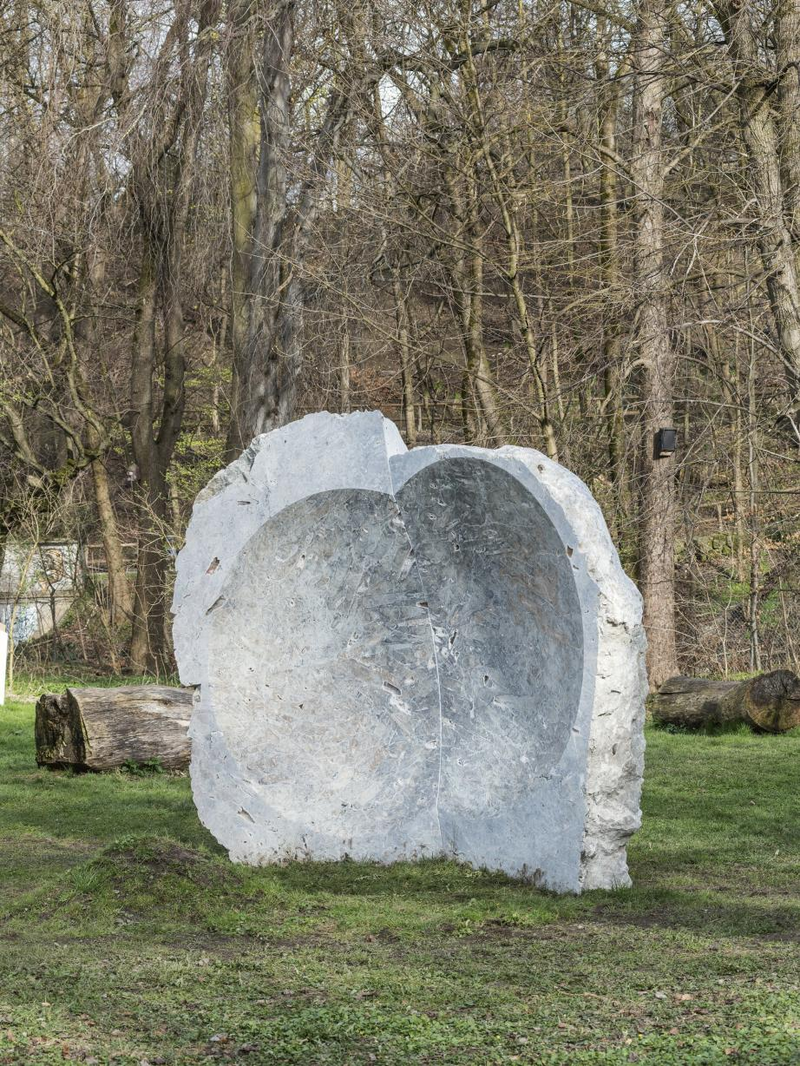
Lina Lapelyté opposes today's loud and unmistakable proclamations of individual opinions, the often aggressive proclamation of the self, with the diffuse listening and silent hearing of the majority. She has not composed a firmly set score. She is interested in the diverse themes and signs of our time, in a contemplative listening space that creates a connection between all people. Copper Lick was conceptualised as a site-specific project for Munich and was realised by the city's cultural department. It is not a matter of sculptures or plastic artworks in the conventional sense; it is not about the usual, often unrelated, and incoherent art in public spaces that claims autonomy and can be found just about anywhere as monuments, street furniture, or decorative objects. Lina Lapelyté's intention is to stimulate dialogue and address the debates and social tensions that are pulsating in society.
Lina Lapelyté, born in Lithuania in 1984, lives and works in London and Vilnius. The artist has a bachelor's degree in classical violin and a master's degree in sculpture. Her performance-oriented works are rooted in music, flirt with pop culture, gender stereotypes, and sculpture. Her theme is not the glorification of the past but the crisis of the present.
Further information:
www.publicartmuenchen.de/en/projekte/copper-lick/
The article was written by Willy Hafner in German.
Cover Picture: Copper Lick, located on the cable footbridge between the Alpine Museum and the Muffathalle on the edge of Munich's Lehel district. Photo: Willy Hafner, Munich

